“Wait, Japan banned Christianity?”
Many foreign visitors are surprised to learn this. In fact, from the 16th to the 19th century—over 250 years—Christianity was completely outlawed in Japan. Believers were tortured, executed, and forced to abandon their faith.
In this article, we’ll explore why Japan came to fear Christianity so much, and how the country carried out one of the most intense religious persecutions in its history.
Christianity Arrives in Japan (1549)

In 1549, the Jesuit missionary Francis Xavier arrived in Japan and introduced Christianity to the country.
At the time, Japan was in the middle of the Sengoku period, a time of constant warfare between feudal lords. Some of these lords welcomed missionaries—not out of religious interest, but for the profitable trade that came with them.
Christian teachings, with their messages of compassion, charity, and education, quickly attracted both samurai and common people. Christianity spread faster than many had expected.
The Rapid Growth of the Christian Community
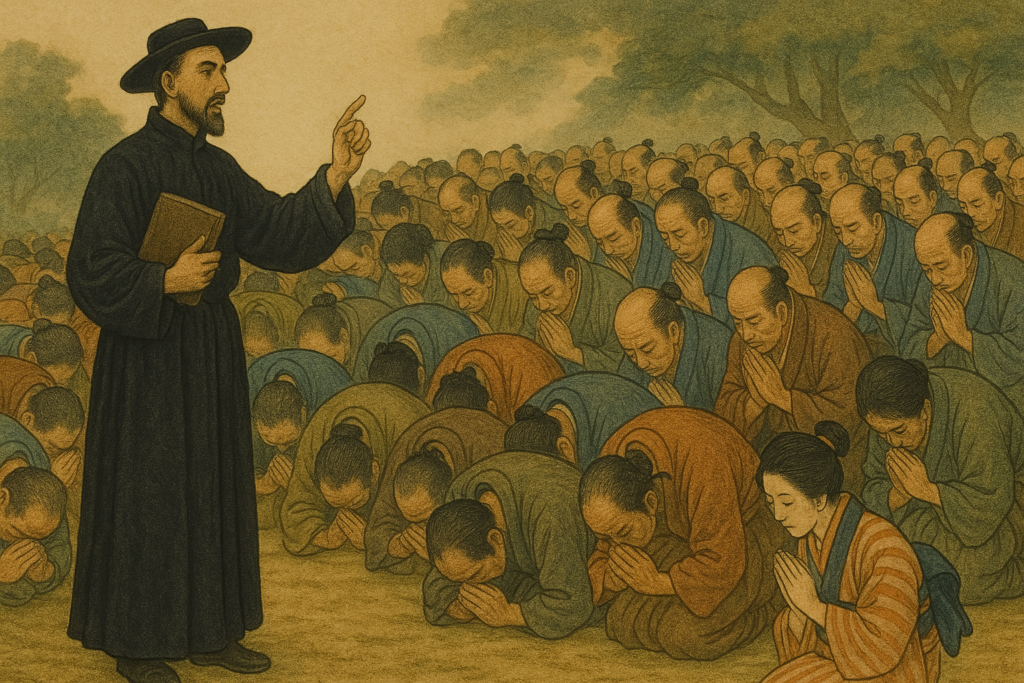
As Christianity expanded, churches were built in cities like Nagasaki, and Christian communities began to form. Missionaries offered education and medical aid, winning the respect of the local population.
At its peak, it’s estimated that over 300,000 Japanese people had converted to Christianity. However, this rapid growth soon alarmed the ruling powers of Japan.
The Beginning of the Ban (Toyotomi Hideyoshi to the Tokugawa Shogunate)
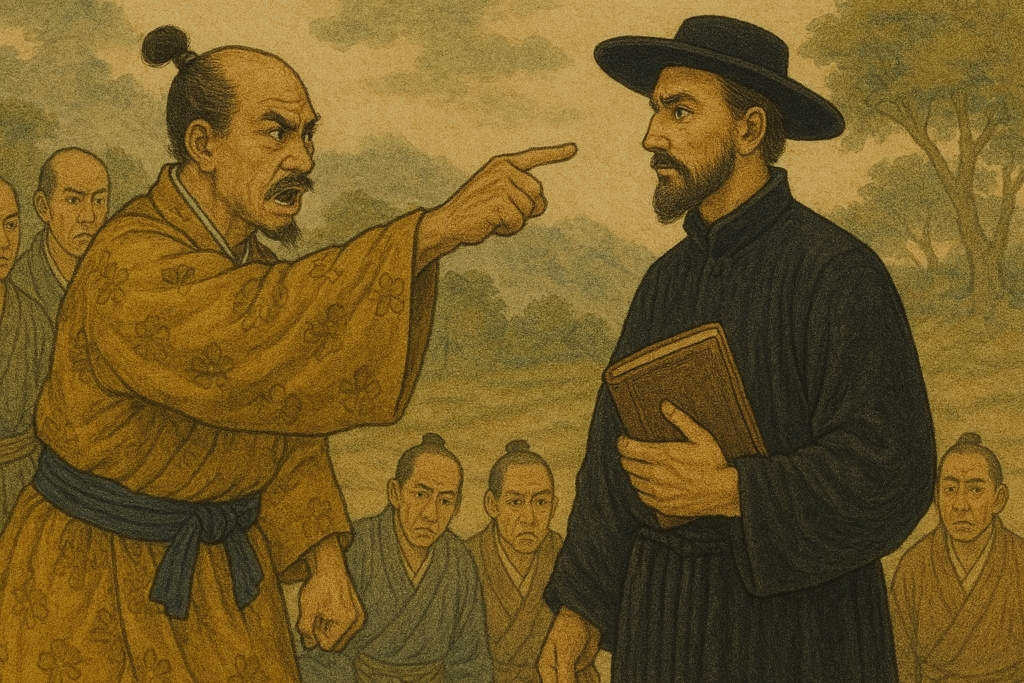
In 1587, warlord Toyotomi Hideyoshi—who was close to unifying the country—suddenly issued a ban on Christianity.
Why? He suspected that missionaries were trying to colonize Japan, and feared that Christianity could undermine traditional values and political stability.
When the Tokugawa shogunate took power in 1600, the crackdown intensified. Christians were arrested, tortured, and even executed. One infamous method of identifying believers was the “fumi-e”.
What Was the “Fumi-e”?

Fumi-e (踏み絵) literally means “stepping-on picture.” It was a test used to identify Christians: people were ordered to step on images of Jesus Christ or the Virgin Mary.
For Christians, stepping on these sacred images was a grave sin. But refusing to do so meant they would be arrested, tortured, or even executed.
In short, they were forced to choose between renouncing their faith or losing their life.
Fumi-e tests were especially common in areas like Nagasaki and Hirado, where Christian populations were large. Some believers pretended to step on the image while secretly continuing their faith—these were the origins of the “Hidden Christians.”
The Shimabara Rebellion (1637): Faith and Fury Explode
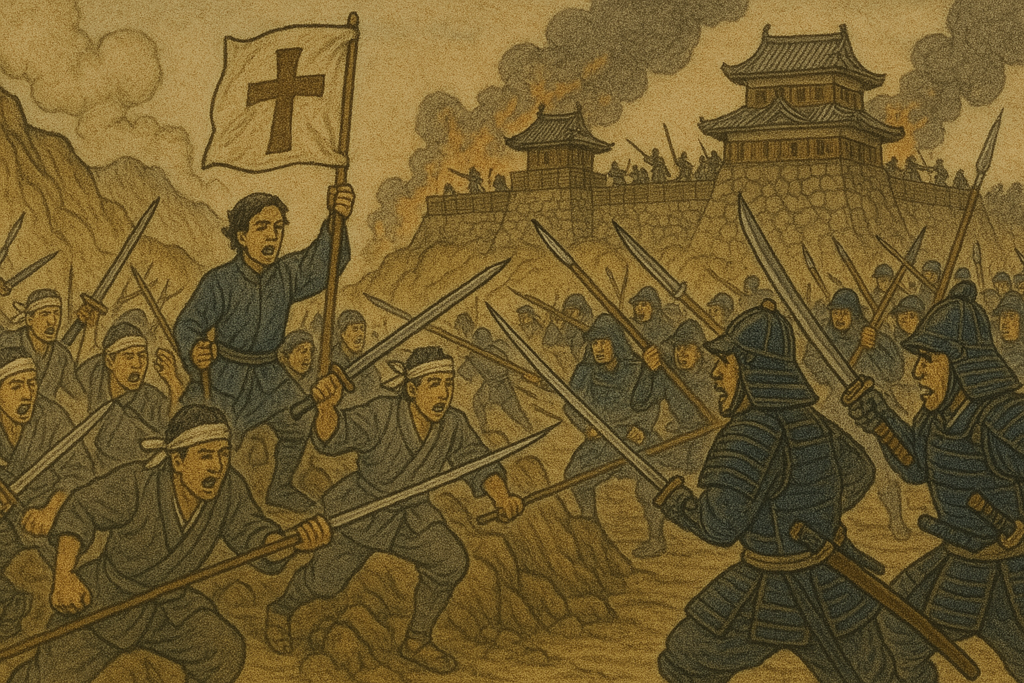
In 1637, a massive rebellion broke out in the Shimabara and Amakusa regions of western Japan.
Although the rebellion was sparked by unfair taxes and famine, many of the rebels were Christians who believed God would protect them.
The Tokugawa government crushed the rebellion with overwhelming force. At Hara Castle, the final battle site, over 30,000 Christian rebels were massacred.
After this, Christianity was seen not just as a threat, but as something that must be completely erased. Japan entered a long period of isolation, cutting off almost all contact with the outside world.
The Hidden Christians: Faith in Silence
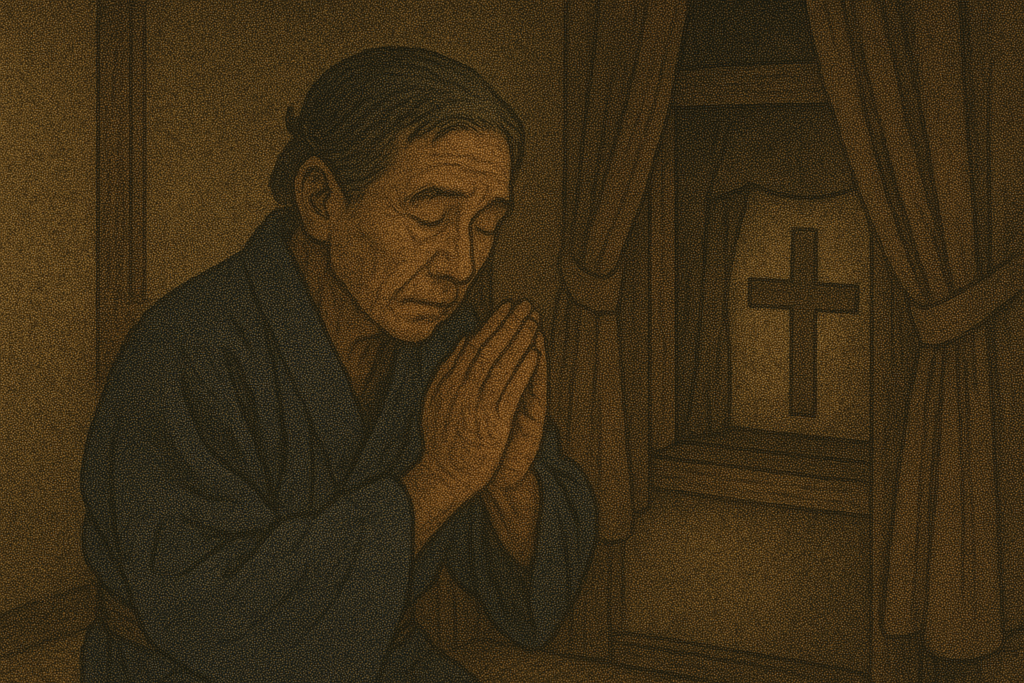
Even after the ban, some Japanese refused to abandon their faith. These people became known as “Kakure Kirishitan” (Hidden Christians).
On the surface, they lived as Buddhists. But in secret, they continued Christian prayers and rituals.
They cleverly disguised their faith:
• Passing down Bible stories orally
• Using statues of the Virgin Mary disguised as Buddhist figures, known as Maria Kannon
• Hiding crosses and religious objects in everyday items
For over 250 years, they kept their beliefs alive—risking their lives to protect their faith.
The Ban is Lifted in the Meiji Period

In the late 19th century, Japan opened up again to the outside world. As the country modernized during the Meiji Restoration, the ban on Christianity was finally lifted.
Freedom of religion was guaranteed, and foreign missionaries returned to Japan.
However, the centuries-long ban had left deep scars. Even today, Christians make up only about 1–2% of Japan’s population.
Why Did Japan Go So Far?
The persecution of Christianity in Japan wasn’t just about religion—it was about politics and control.
The ruling class saw foreign religions as potential threats to their power and national unity.
At the same time, the story of the Hidden Christians shows that even in times of oppression, there were people who valued freedom of belief above all else.
Recommended Articles




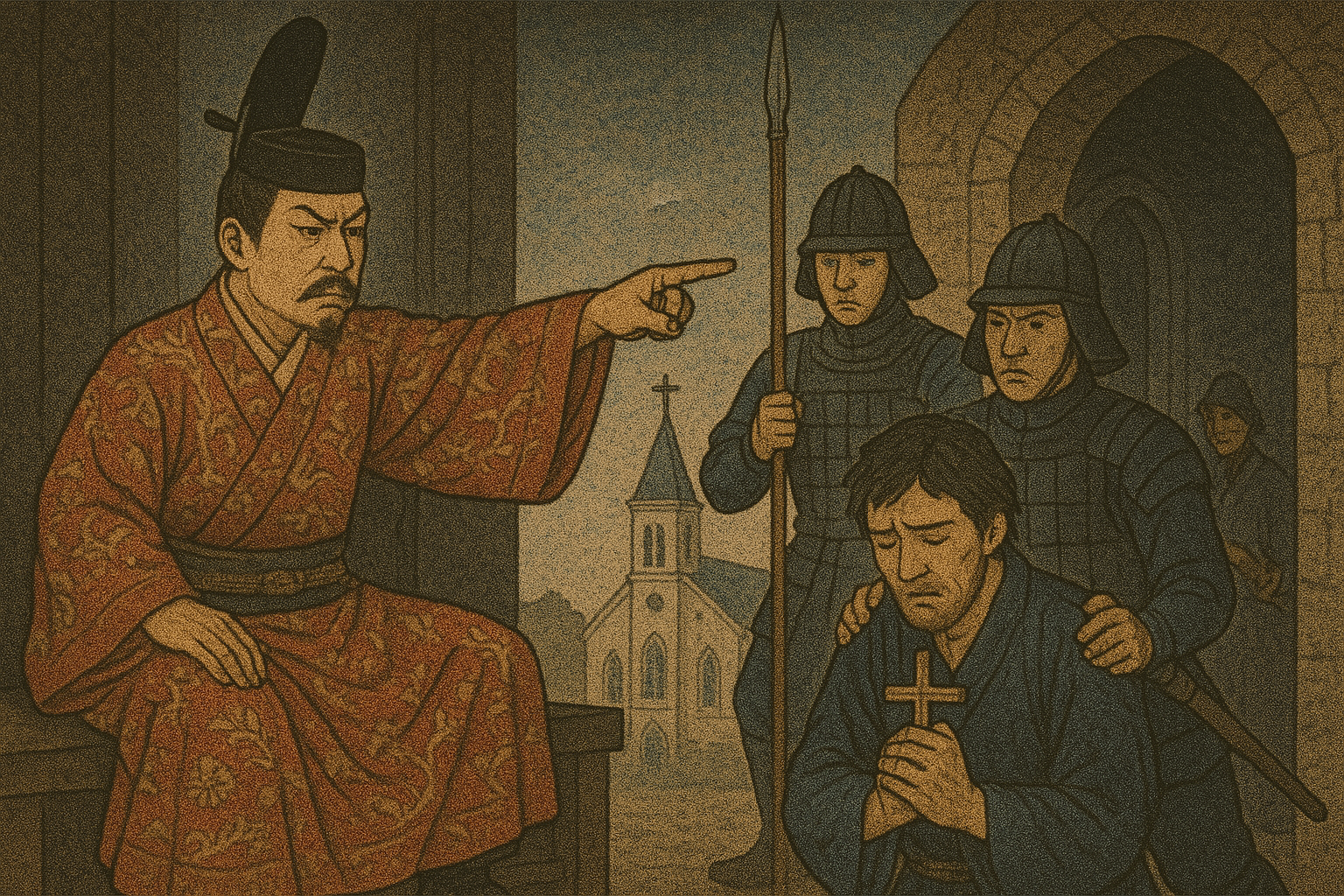


Comments